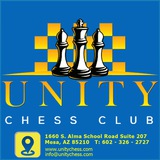A nice concept. White gives up his backward pawn on d4 in order to enclose the bishop on a8 .
Now the picture is clear. Black cannot even prevent White from winning back a pawn on a5 .
In reality, exchanging is not about what is taken from the board, but more about what is left on the board. After an exchange of queens the strength of the remaining pieces may come to the fore, yielding a pleasant endgame.
White is hoping to use the a- and c-files for his rooks. The doubling of pawns on the way can make it harder for you to detect this possibility, though there are some famous precedents, for example, Smyslov-Tal, Bled 1959.
19...a5 20.Kf2 b6 21.b4 a4 22.Nxa4 Bxb5 23.Nc3 Rxa1 24.Ra1 Bc4 25.Bc7 f6 26.Na4 Rf7 27.Bxb6
When exchanging a piece you can try to eliminate an active piece of your opponent, but when attacking you can also try and remove one of your opponent's strongest defensive pieces. So what would you play in the diagram position?
